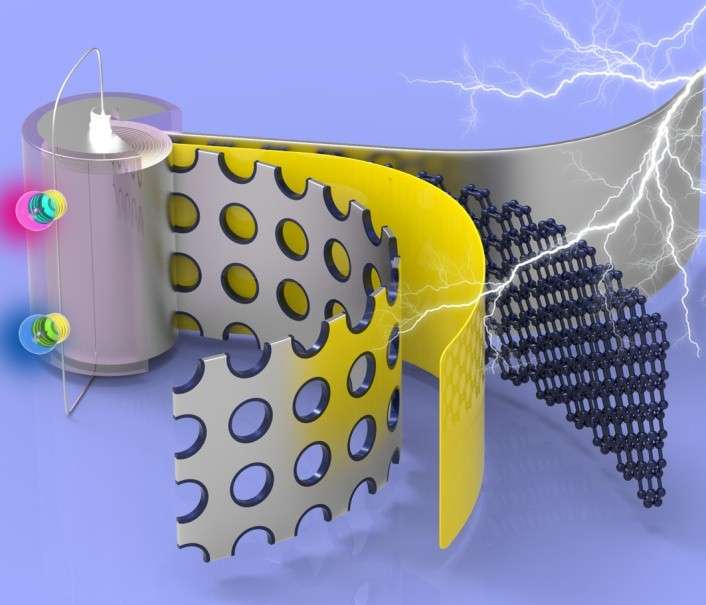Researchers develop an efficient dual-ion battery design

Dual-ion batteries (DIBs) are a new type of battery developed in recent years, typically using graphite as both the cathode and anode material. DIBs can operate across a wider voltage window with safer performance, and are cheaper than conventional lithium-ion batteries.
Prof. TANG Yongbing and colleagues from the Shenzhen Institutes of Advanced Technology, Chinese Academy of Sciences, had previously developed a novel and low-cost aluminum-graphite DIB (AGDIB) using aluminum foil as both the anode and current collector. Although the AGDIB exhibits high energy density, it is impractical due to poor stability caused by the crack-and-pulverization problem of aluminum foil during cycling.
To solve this problem, Prof. TANG and his colleagues designed a 3D porous aluminum foil coated with a uniform carbon layer (pAl/C) both as the anode and the current collector for the DIB. The 3D porous structure of aluminum alleviates the mechanical stress caused by the volume change of aluminum during electrochemical cycling, and shortens the ion diffusion length as well. The carbon layer buffers the aluminum volume change and alleviates undesirable surface reactions through SEI film formation.
Therefore, owing to the synergistic effect of the porous and conductive structure of the pAl/C anode, the DIB exhibits an excellent long-term cycling stability of over 1000 cycles with 89.4 percent retention of capacity at 2C current rate (charging/discharging within 30 minutes). It's worth noting that the energy density of this DIB is estimated to be 204 Wh kg-1 at a high power density of 3084 W kg-1 (charging/discharging within 4 minutes), which is two times larger than best commercial lithium ion batteries and the best performance of any reported DIBs.
Prof. TANG and colleagues believe that this novel DIB, characterized by low cost, high rate, high energy density and long-term cycling capabilities, shows great potential for industrial applications in the energy field such as portable electronics and electric vehicles.
This research was supported by the Guangdong Innovation Team and the National Natural Science Foundation of China and published online in Advanced Materials.
Journal information: Advanced Materials
Provided by Chinese Academy of Sciences




















